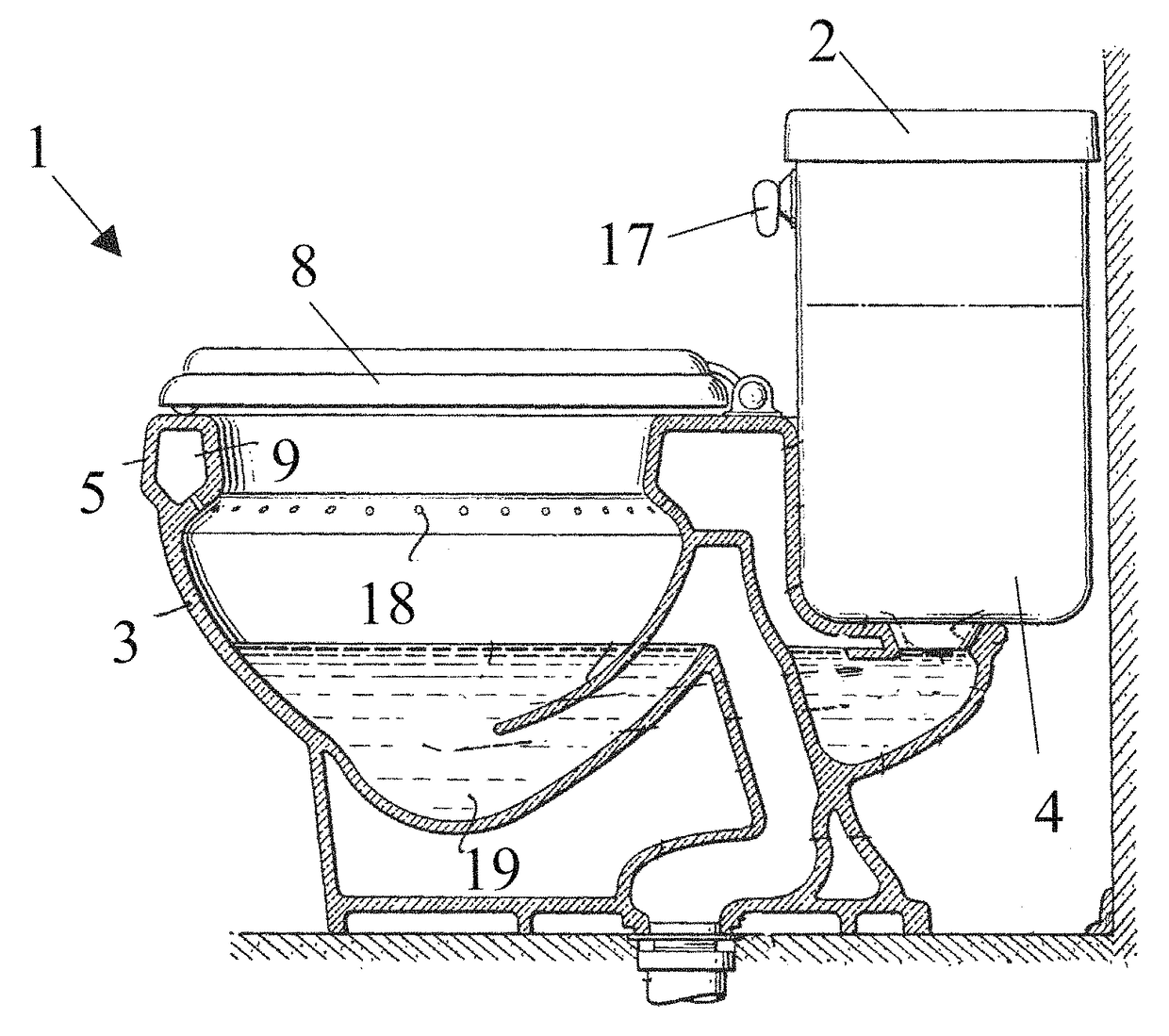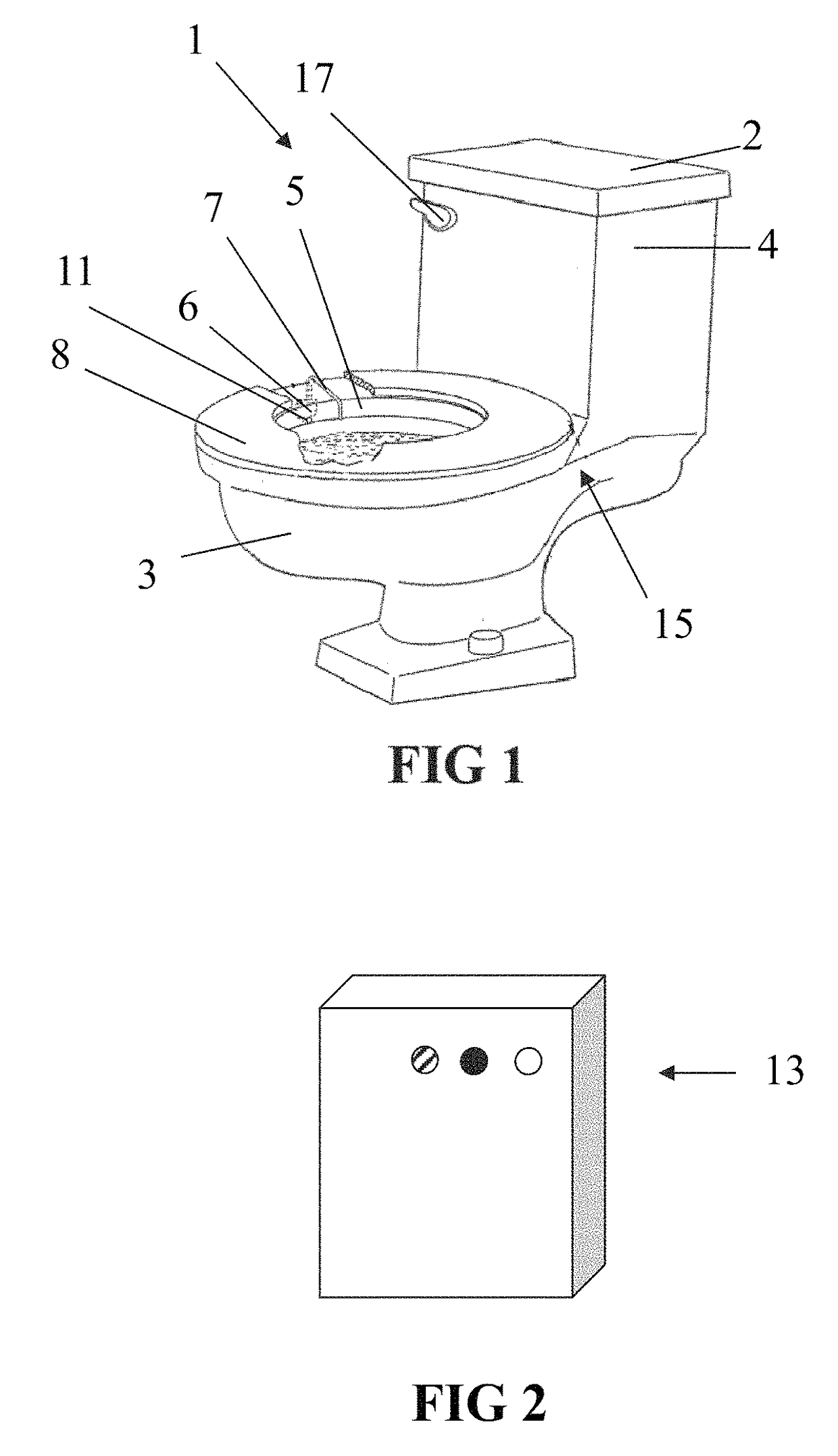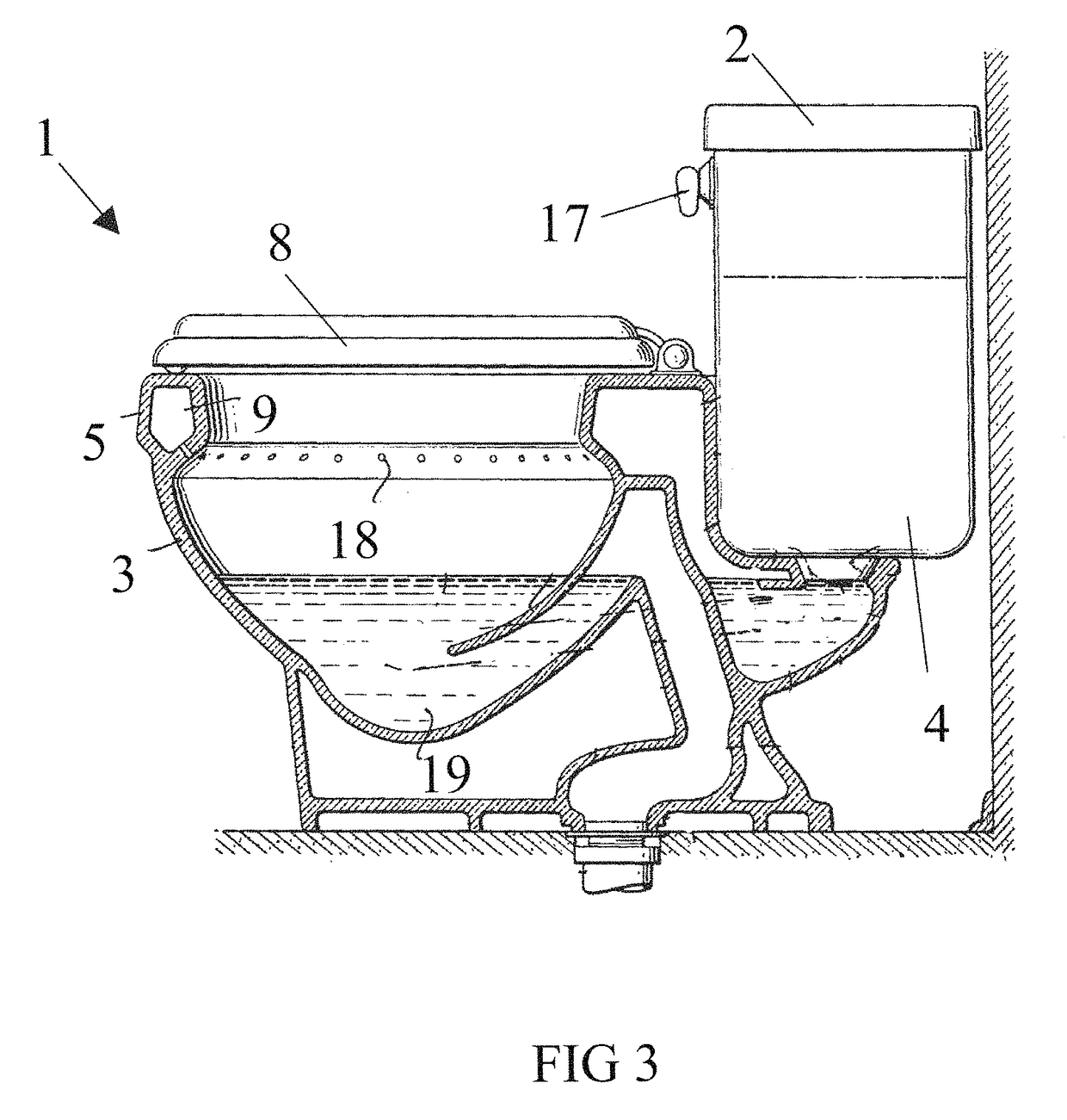Networked leak and overflow detection, control and prevention system
a leak detection and leak prevention technology, applied in water installations, instruments, constructions, etc., can solve the problems of difficult installation, difficult installation, inability to work in toilets and urinals, etc., to increase the signal to noise ratio, effectively power devices and assemblies, and low current cost of microcontrollers.
- Summary
- Abstract
- Description
- Claims
- Application Information
AI Technical Summary
Benefits of technology
Problems solved by technology
Method used
Image
Examples
Embodiment Construction
[0062]The following description is provided to enable any person skilled in the art to make and use the invention and sets forth the best modes contemplated by the inventors of carrying out their invention. Various modifications, however, will remain readily apparent to those skilled in the art, since the generic principles of the present invention have been defined herein specifically to provide for an improved and simplified leak detection and overflow detection and prevention system.
[0063]As shown in FIG. 1, embodiments of the leak and overflow and prevention system has one or more leak detectors, sensor assemblies and other devices located within the vicinity of the toilet 4 being monitored for leaks. A particular embodiment of a leak detector device 6 of the present invention is shown mounted off to the side of the bowl 3 of the toilet 1 suspended from the upper rim 5 of the toilet bowl 3 using a wire hook 7 as shown through a cut-out of the seat 8. While detection devices of t...
PUM
 Login to View More
Login to View More Abstract
Description
Claims
Application Information
 Login to View More
Login to View More - R&D
- Intellectual Property
- Life Sciences
- Materials
- Tech Scout
- Unparalleled Data Quality
- Higher Quality Content
- 60% Fewer Hallucinations
Browse by: Latest US Patents, China's latest patents, Technical Efficacy Thesaurus, Application Domain, Technology Topic, Popular Technical Reports.
© 2025 PatSnap. All rights reserved.Legal|Privacy policy|Modern Slavery Act Transparency Statement|Sitemap|About US| Contact US: help@patsnap.com



